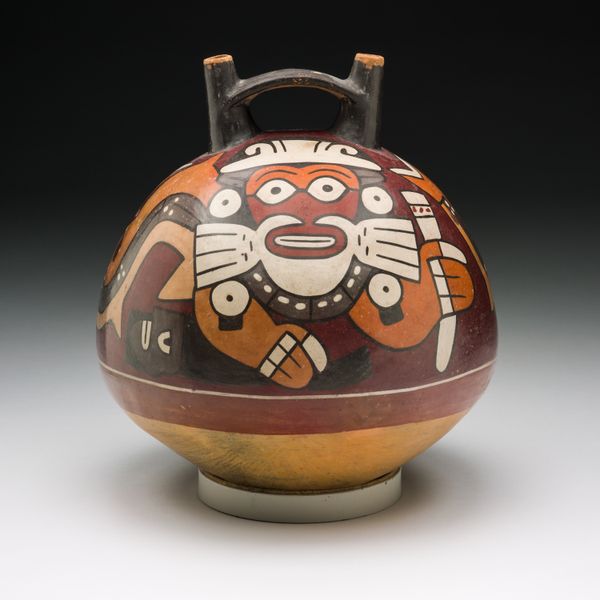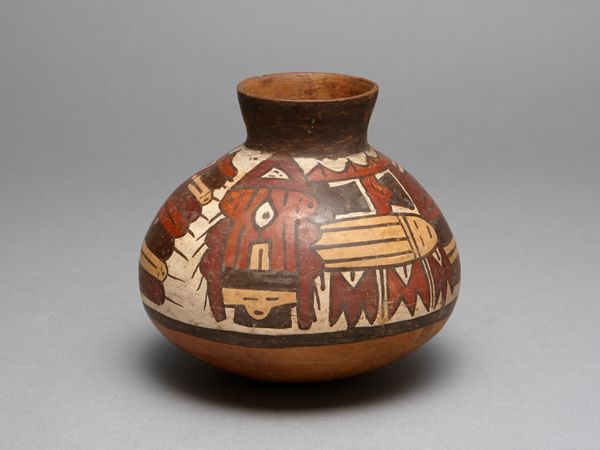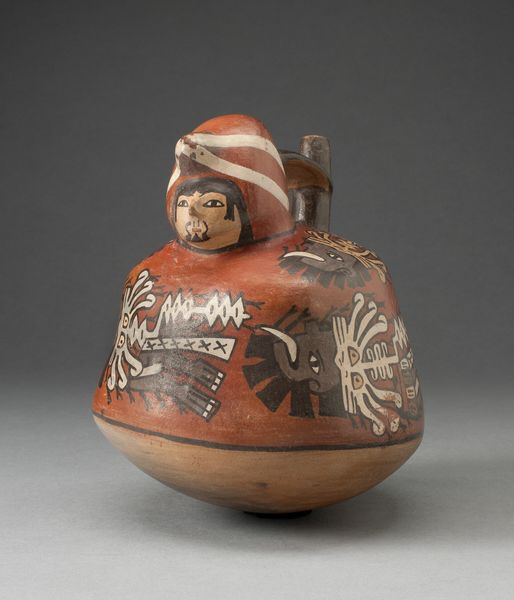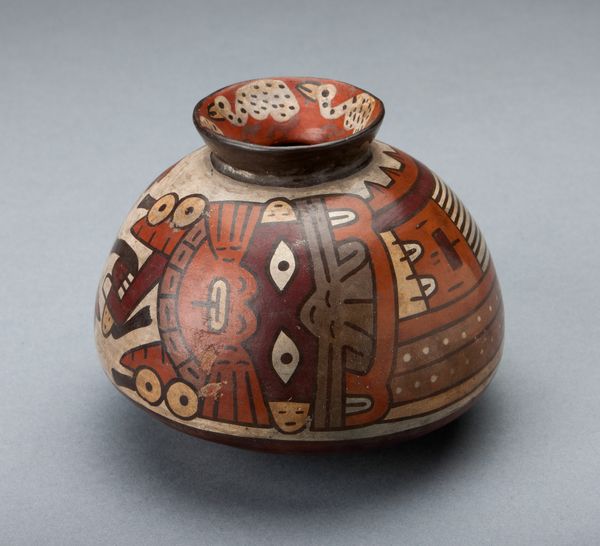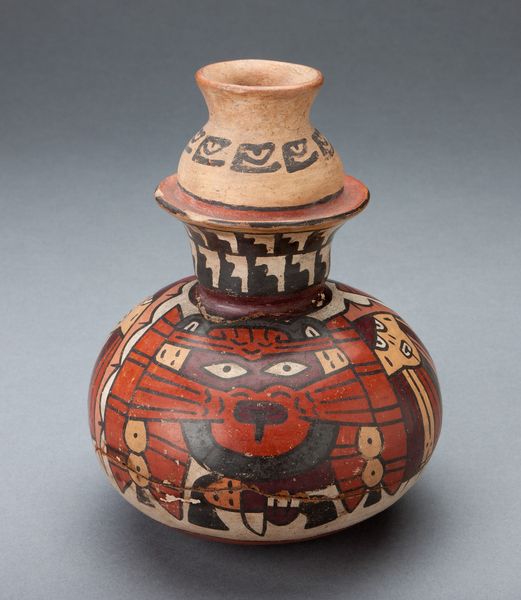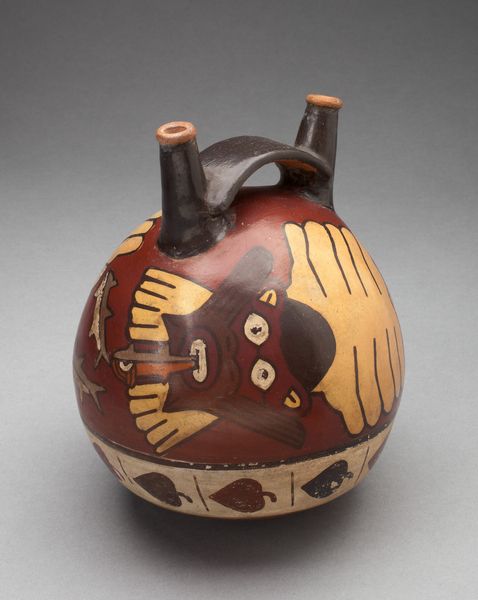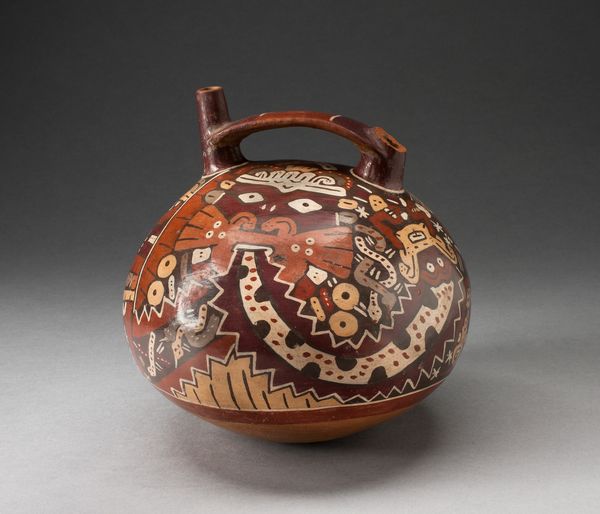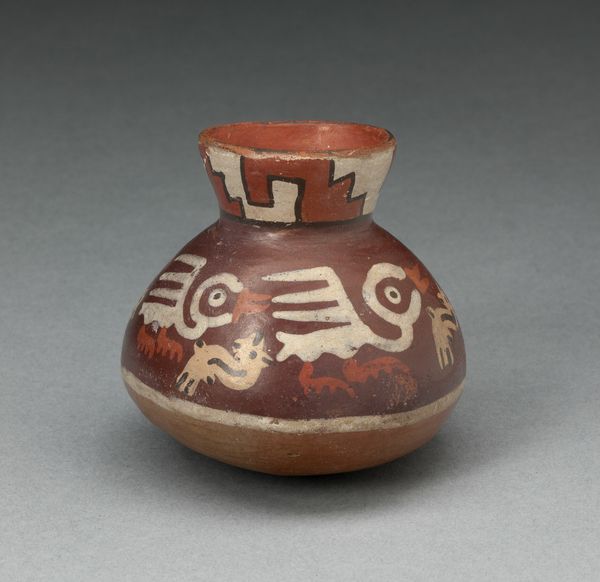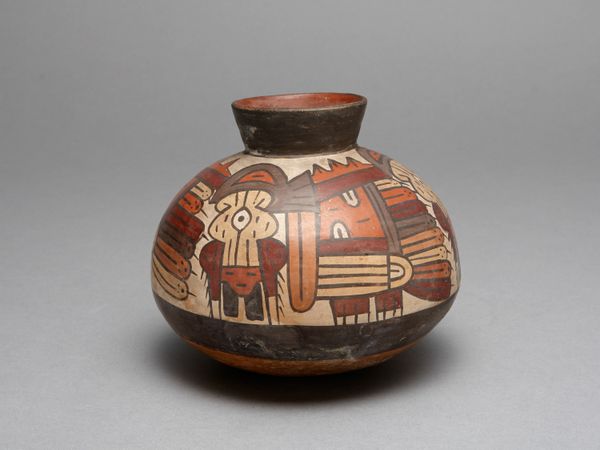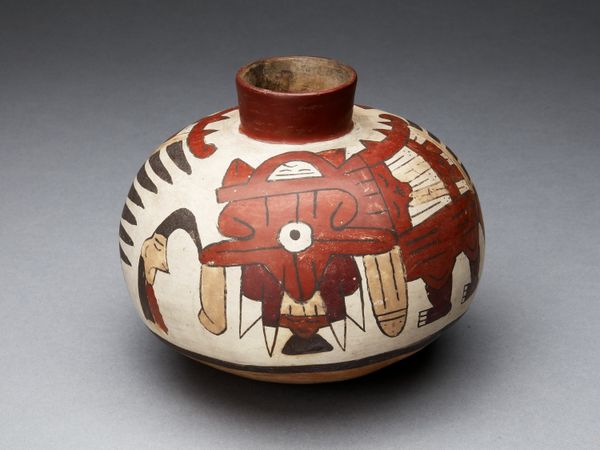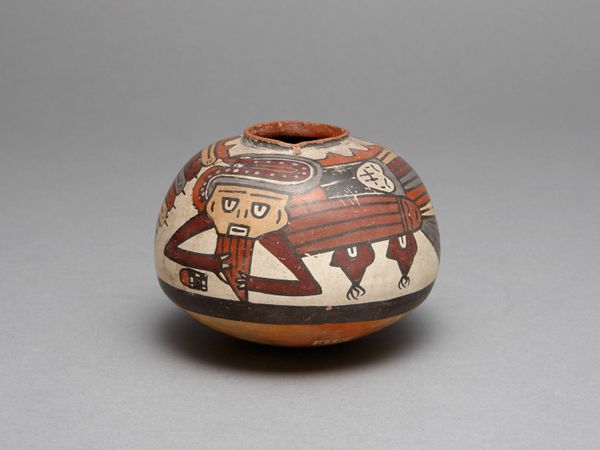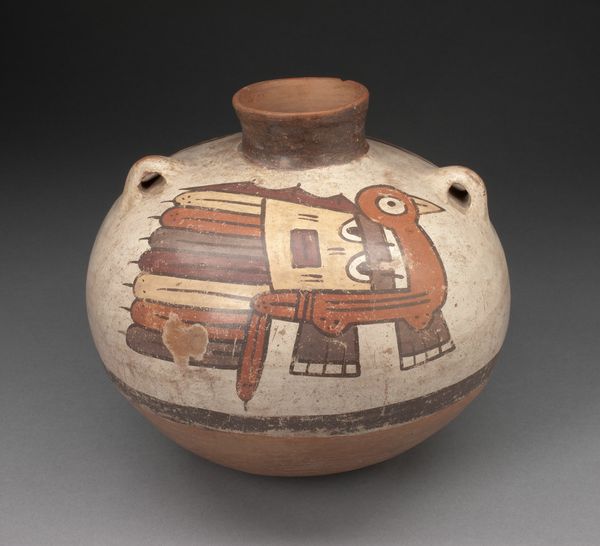
ceramic
#
ceramic
#
figuration
#
indigenous-americas
Dimensions: 17 × 14.6 cm (6 11/16 × 5 3/4 in.)
Copyright: Public Domain
Editor: This is "Vessel of a Woman," a ceramic object created by the Nazca culture sometime between 350 and 500 CE. I'm immediately struck by how the artist integrated the human form into a functional shape. The figures painted around the vessel are quite compelling as well. What's your take on this piece? Curator: The strength of this piece resides precisely in its structural integration of form and surface decoration. The spherical lower body provides a stable base, contrasting with the more complex upper portion that resolves in the representation of a human figure. Consider how the rounded volumes interlock—the smaller sphere of the head atop the larger volume of the body, which echoes the vessel’s lower half. Editor: The figures encircling the bottom half seem stylized, almost like glyphs. Curator: Indeed. Notice how these painted figures, though presented in a linear, repetitive fashion, employ a limited palette – predominantly red and tan against the white ground – creating a unified visual field. These contrasting colors provide visual clarity while emphasizing a flattening of pictorial space; observe the linear details delineating the figures' contours and interior elements. What do you make of the headwear, especially? Editor: It’s boxy and protrudes significantly. I initially considered an animal-like depiction, but perhaps the rectangular form communicates an authority figure? Curator: A perceptive observation. Irrespective of the intended symbolic significance, one can argue the geometric abstraction serves to integrate these decorative figures, not merely into the form of the vessel, but moreover—conceptually—with the aesthetic project of the artist. Editor: I never would have considered focusing on the shapes of the drawings themselves! It makes so much more sense than diving right into the meaning behind it all. Curator: Analyzing structure first provides a more secure foundation for interpretations. This vase testifies to the successful translation of representation through carefully planned arrangement and carefully balanced color distribution within well-defined spatial bounds. Editor: Focusing on visual elements reveals a more refined way of analyzing artworks.
Comments
No comments
Be the first to comment and join the conversation on the ultimate creative platform.
